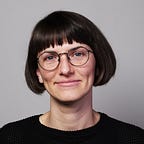Quantifying Equity of Street View Images
Measuring Equity
While a human can immediately distinguish characteristics between a well-off neighborhood from one that is less-endowed, the technical difficulty of measuring and quantifying these characteristics has led to an inability to define the inequalities of the environments we live in. This project attempts to quantify features of urban form as indicators of a neglected environment. Google Street View provides a huge repository of images across neighborhoods of New York City and is normalized by the same type of equipment and always taken from the street.
Quantifying Indicators of Equity
I used street view images from 4 locations in the Upper West Side and 4 locations in Brownsville and compared the amount of pixels in each image of components that are associated with safety or equity (amount of windows, the amount of power lines, amount of vegetation, etc). In order to do this I manually outlined each of these components and then counted the black pixels with a custom script in Grasshopper for Rhino. While this method is only partially automated, measuring the percent of the street with equitable features could be further automated on the entirety of Google’s street view repository using object recognition and then counting the number of pixels of recognized objects in each image.
Python script for downloading Google Images
Grasshopper script for counting black pixels
Safety as the Metric?
Historically many Urban planning theories have focused on safety and crime prevention from Jane Jacobs “Eyes on the Street” to Defensible Space Theory. Outside of planning, ideas of a safe environment, such as Broken Windows Theory have been adopted and mis-used to police people in neglected environments.
Urban Equity Not Urban Safety
When safety is the metric for urban form, regular citizens are suspects, constantly tempted to criminality by their changing environment. If someone’s window is broken, it encourages theft? If someone’s window is broken it probably indicates a need for financial support.
Its time to extend the narrative beyond urban safety to urban equity. Is an environment one that prevents or causes criminality, or one that creates feelings of self-worth, connection to community or makes a police officers and citizens alike feel less threatened and thus less likely to find conflict? What would happen if we shift money towards neighborhood investment rather than policing and safety measures?
